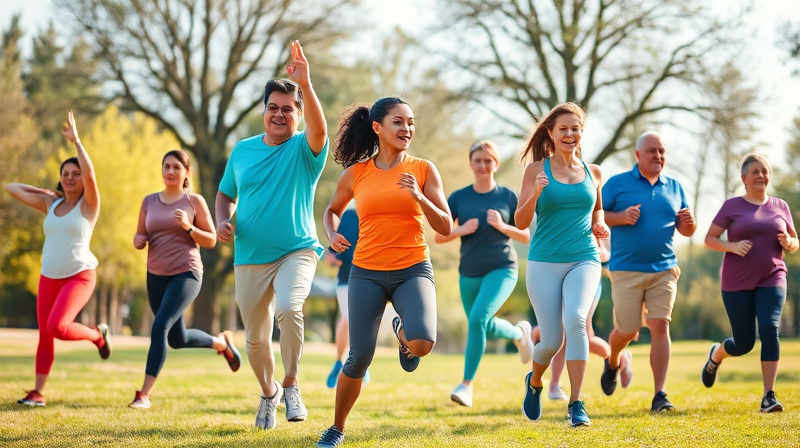Stretching is an art and a science that extends far beyond simple routines. Modern research is reshaping our understanding of how stretching can reduce soreness and increase flexibility, offering profound insights that empower individuals to embrace healthier lifestyle choices. As you explore these developments, you will discover that consistency, proper technique, and the right intensity are essential factors in unlocking your body's potential.
With an ever-growing interest in how our muscles respond to different stretching protocols, scientists have uncovered both immediate and long-term effects. These findings are not just enlightening; they provide actionable strategies for reducing muscle stiffness and enhancing overall flexibility. This inspiring journey into the world of stretching science opens up new possibilities not only for athletes and fitness enthusiasts, but for anyone seeking to improve mobility and comfort in daily life.
The Science Behind the Stretch
The latest studies reveal two primary categories of stretching effects: acute and chronic. The acute effects occur immediately after a single stretching session and can result in a noticeable decrease in muscle stiffness. However, these benefits are temporary and tend to regress back to baseline levels rather quickly.
On the other hand, chronic stretching, which is the result of regular and dedicated practice, leads to persistent improvements. This cumulative effect includes a gradual decrease in muscle stiffness and an increase in what researchers call stretch tolerance. Even though the physical muscle length may not significantly change, the neuromechanical adaptations allow you to experience deeper, more comfortable stretches over time.
These results remain consistent regardless of age, sex, or initial flexibility levels. Such universal benefits reinforce the idea that stretching is a fundamental physiological practice that can be customized to meet individual needs.
When you commit to a regular stretching routine, the benefits extend beyond the physical. It nurtures a resilient mindset, encouraging you to view challenges as opportunities for growth, both bodily and mentally. As you delve into the science of stretching, you begin to appreciate the harmony between movement and well-being.
Inspiration comes from unlikely sources as well, such as the natural world. Observations of spider silk provide a compelling analogy with stretching. Just as the act of stretching in spiders strengthens the silk by realigning protein chains, proper stretching techniques help reconfigure our own muscle fibers in a subtle yet powerful way. This natural phenomenon reminds us that transformation and strength often stem from repeated, deliberate actions.
The beauty of stretching is that it’s accessible to everyone. Whether you are a dedicated athlete or embarking on your first exercise routine, the science behind stretching demystifies the process and makes its benefits clear and attainable.
This extensive exploration into stretching science offers practical takeaways that can be seamlessly incorporated into your daily routine. It emphasizes that achieving increased flexibility is not about extreme measures or one-size-fits-all solutions, but rather a consistent, measured approach that builds up over time.
- Consistency Over Intensity: Regular practice is more beneficial in the long run than sporadic, intense sessions.
- Mindset and Tolerance: Much of what contributes to flexibility is becoming more comfortable with the stretch itself, rather than changing the muscle's physical properties.
- Short-term vs. Long-term Benefits: Moderate to high-intensity stretching can yield immediate relief from muscle stiffness while promoting better chronic adaptation with regular practice.
- Not a Substitute for Strength Training: Stretching is excellent for flexibility but should be paired with proper resistance training when muscle building is a goal.
These elements underscore the importance of understanding the role of stretching in overall fitness. The practical applications of this research enable you to adapt your stretching routines to prevent injury, reduce soreness, and maintain a robust level of physical activity. With the right approach, stretching can revitalize your muscles and provide a foundation for lifelong mobility and comfort.
Even if you have experienced skepticism about the value of stretching, the scientific evidence now supports its incredible benefits. Every stretch you perform contributes to a cumulative process that not only eases the physical strain of daily activities but also enhances your overall quality of life.
Whether you’re looking to overcome chronic stiffness, improve athletic performance, or simply enjoy a greater range of motion, the latest research on stretching science offers a beacon of hope and practicality. Embrace the journey of stretching with passion and determination, knowing that every effort you invest translates to tangible benefits for both body and mind.
Remember, true flexibility is not just measured in degrees of movement—it is a holistic state of being that encompasses mental strength, physical resilience, and an unwavering commitment to self-care. By integrating these scientifically-backed strategies into your routine, you are taking a significant step towards a healthier, more vibrant you.








